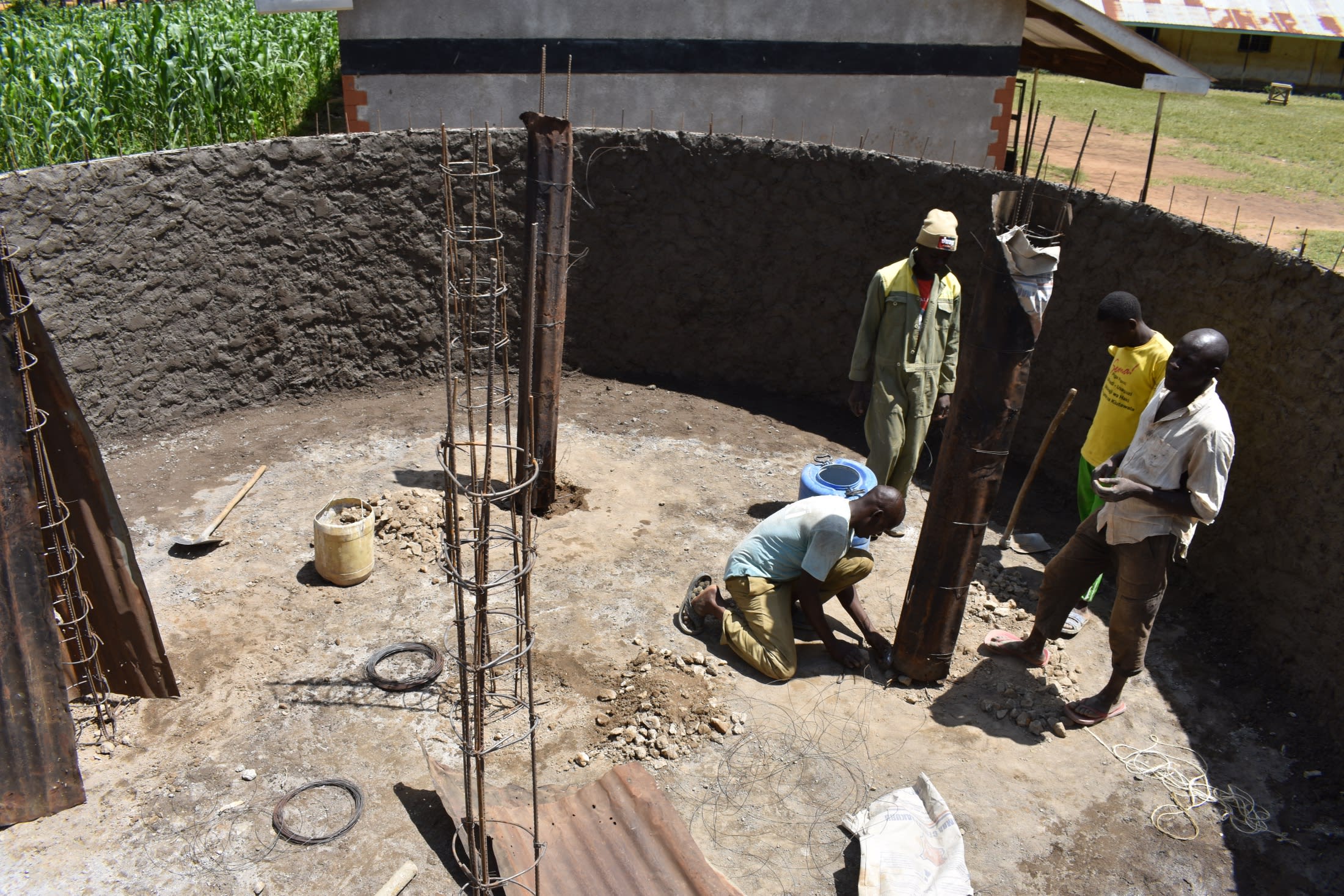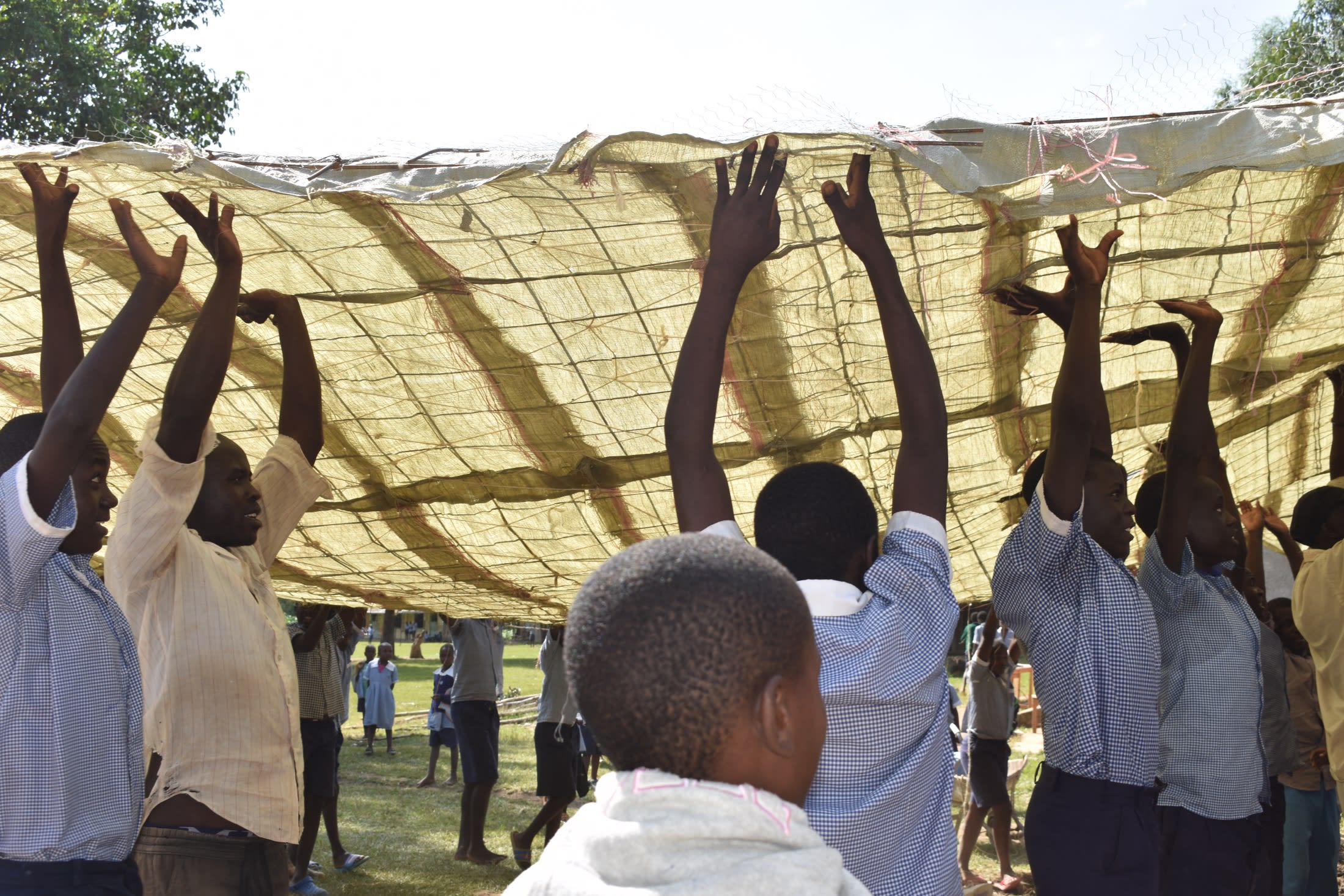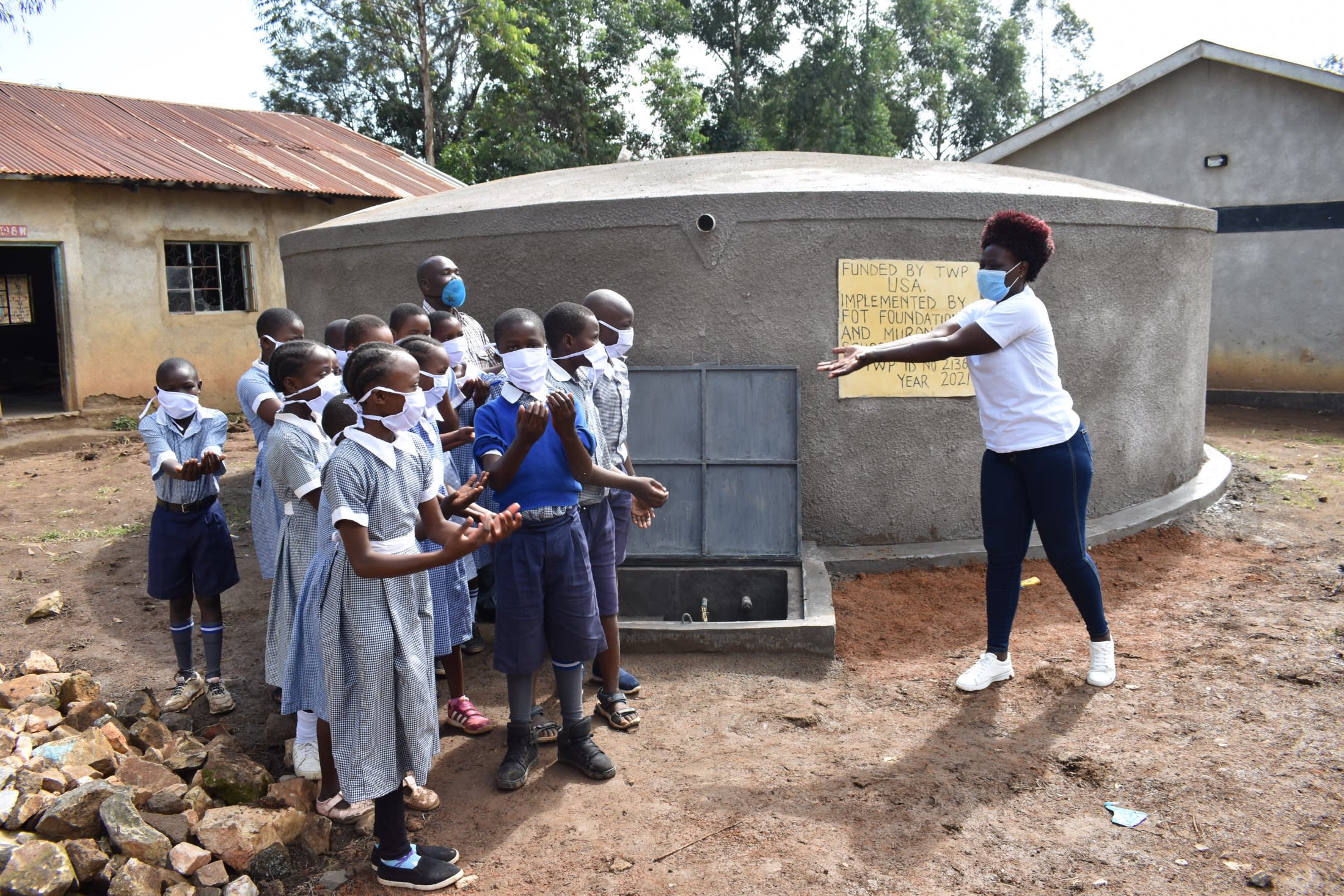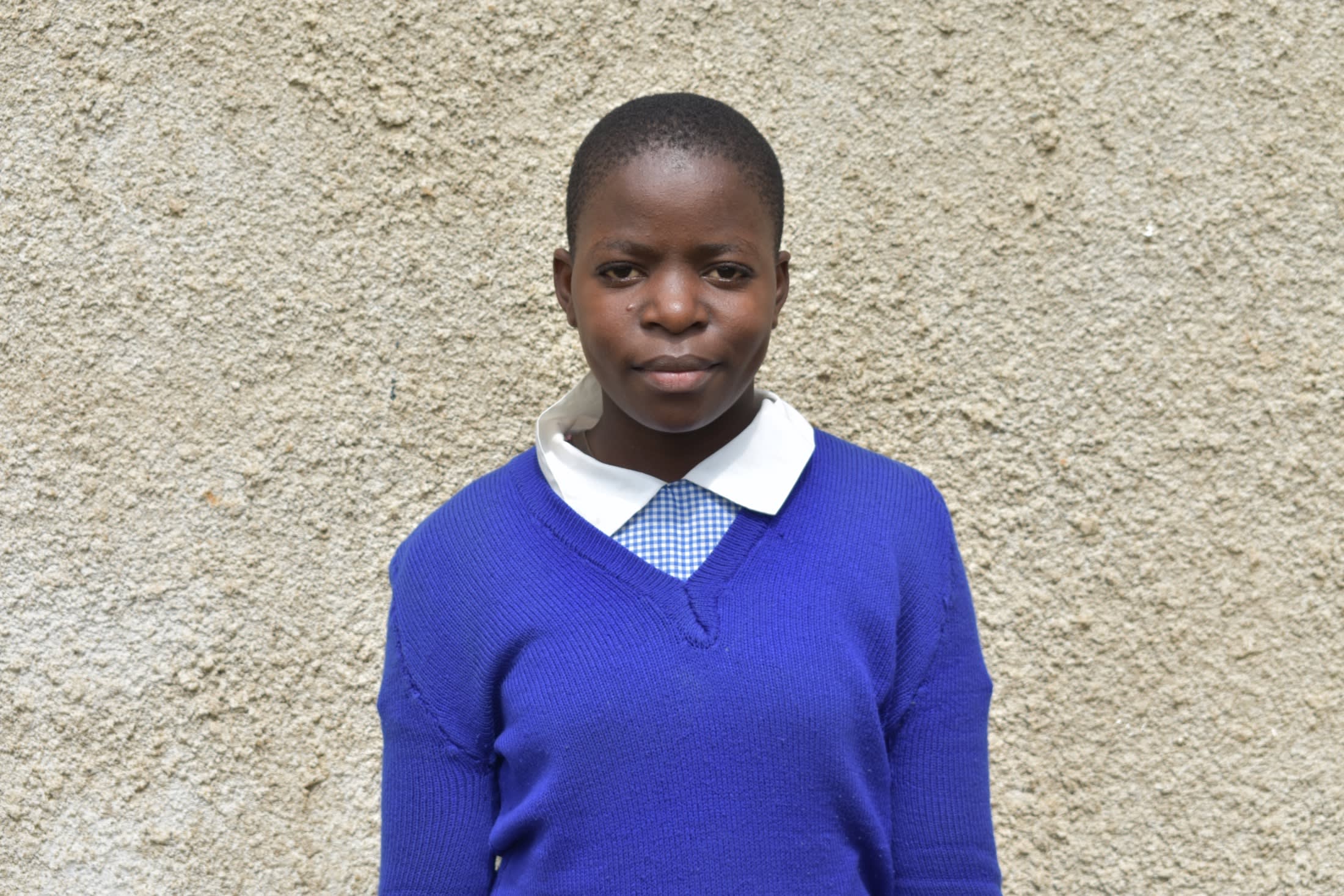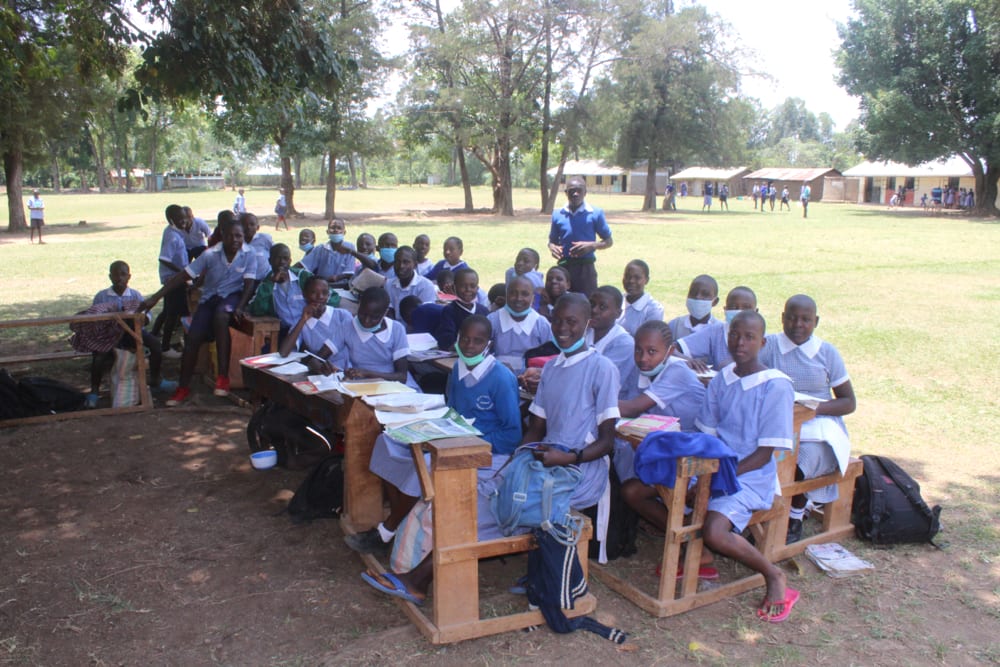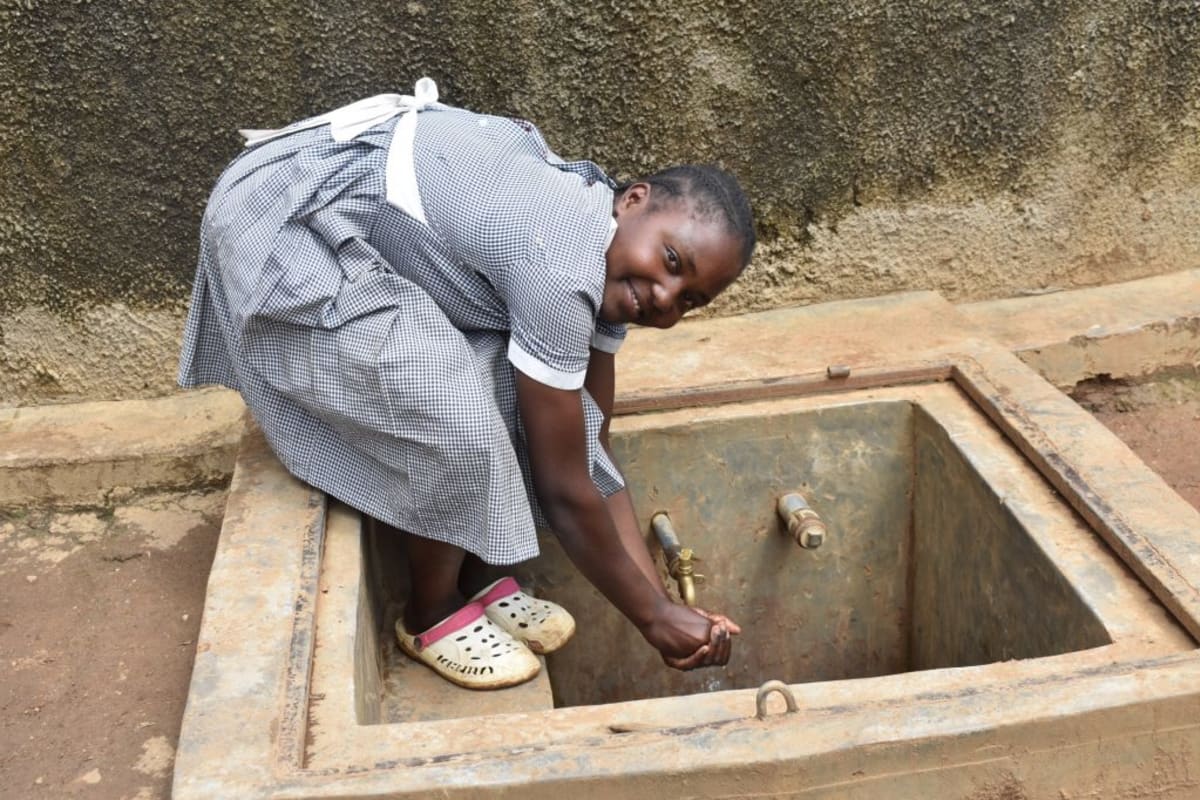Muroni Primary School is found just off the main road, next to the Muroni Market. Sugarcane and maize plantations surround the school, in addition to some homesteads. Local community members founded the school in 1952. It serves 1,293 students and 24 teachers and staff. With such a large student population, the school's greatest challenge remains access to a sufficient and reliable supply of clean water.
The only water point in the school compound is a standpipe that is supplied by municipal water. But the tap water is only available for several hours, some days each week - there is no predictable schedule for the school to rely on. When the tap turns on, the school uses the water to fill their only water storage point - a 5,000-liter plastic tank - which is nothing compared to the high water needs of a school this size.
The intermittent water supply leaves the school in a constant cat and mouse game of a water crisis, trying to fill the tank each time the tap turns on yet finding they've run out of water often when the water does not materialize. Whenever the school finds they are without water, they have to send students out into the community to fetch it wherever possible. A commonly relied upon source for many students is an unprotected hand-dug well far off in the community. The water from this well is not safe for consumption, but it is more or less reliable, which is why the students seek it out.
Drinking contaminated water leads to water-related and waterborne illnesses among the students, driving absenteeism in the school. Students frequently report typhoid, cholera, and amoeba cases, among other illnesses, from drinking water at school. When sick, students can miss a lot of class time as they recover, while their families lose money paying for their children's expensive medical treatment.
Students miss more class time with each trip out into the community searching for water. This results in tired students, lack of focus, and lagging academic performance. Students sleeping in class is a common occurrence after trips to fetch water. Each trip out of the school compound also means students have to cross the busy road full of speeding motorbikes, risking their safety. Teachers, parents, and pupils alike fear an accident each time students are sent out.
"We miss the first school lesson when we go to the unprotected dug well to collect water. Also, sometimes the adults do not allow us to collect water at the unprotected dug well," said student Comfort, referring to the community members who are at odds with the students for their water needs.
"The school becomes unmanageable because a lot of time is used in looking for water, and the academic standards are compromised," explained teacher Peter Busolo.
What We Can Do:
Rain Tank
A 75,000-liter rainwater catchment tank will help alleviate the water crisis at this school. The school will help collect the needed construction materials such as sand, bricks, rocks, and water for mixing cement. We will complement their materials by providing an expert team of artisans, tools, hardware, and the guttering system. Once finished, this tank will begin catching rainfall used by the school’s students and staff for drinking, handwashing, cooking, cleaning, and much more. And each time the tap water turns on, the school can use this large tank as a storage place for safe drinking water.
The school and we strongly believe that all of these components will work together to improve standards at this school, which will help lead to better student academic performance and unlock the potential for these students to live better, healthier lives.
Handwashing Stations
The student health club will oversee the 2 new handwashing stations we will provide and ensure they are kept clean and in working condition. The club leaders will fill the handwashing stations with water daily and make sure they are always supplied with a cleaning agent such as soap or ash.
VIP Latrines
We will construct 2 triple-door latrine blocks using local materials that the school will help gather. 3 doors will serve the girls, while the other 3 will serve the boys. These new latrines will have cement floors designed to be easy to use and clean. And with a rain tank right on school property, there should be enough water to keep them clean.
Training on Health, Hygiene, COVID-19, and More
We will hold a 1-day intensive training session with students, teachers, and parents. This training will cover a wide range of topics, including COVID-19 symptoms, transmission routes, prevention; personal and environmental hygiene; and the operation and maintenance of the rain tank, latrines, and handwashing stations. There will be a special emphasis on handwashing.
Our team of facilitators will use various methods to train, including participatory hygiene and sanitation transformation, and asset-based community development. We will initiate a student health club, which will prepare students to lead other pupils into healthy habits at school and home. We will also lead lectures, group discussions and provide illustrative handouts to teach health topics and promote good hygiene practices within the school, including handwashing and water treatment. We will then conduct a series of follow-up training before transitioning to our regularly scheduled support visits throughout the year.



 Rehabilitation Project
Rehabilitation Project



















